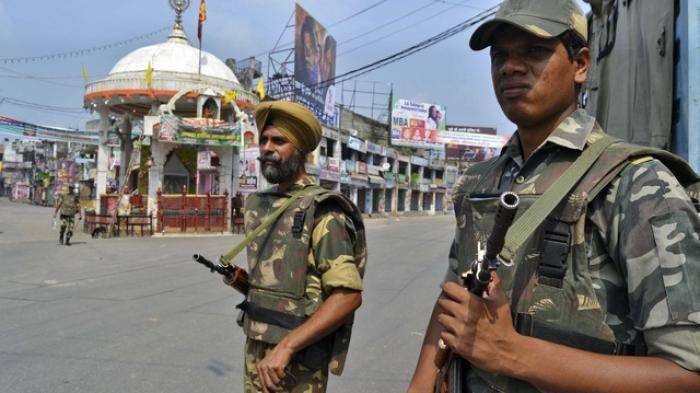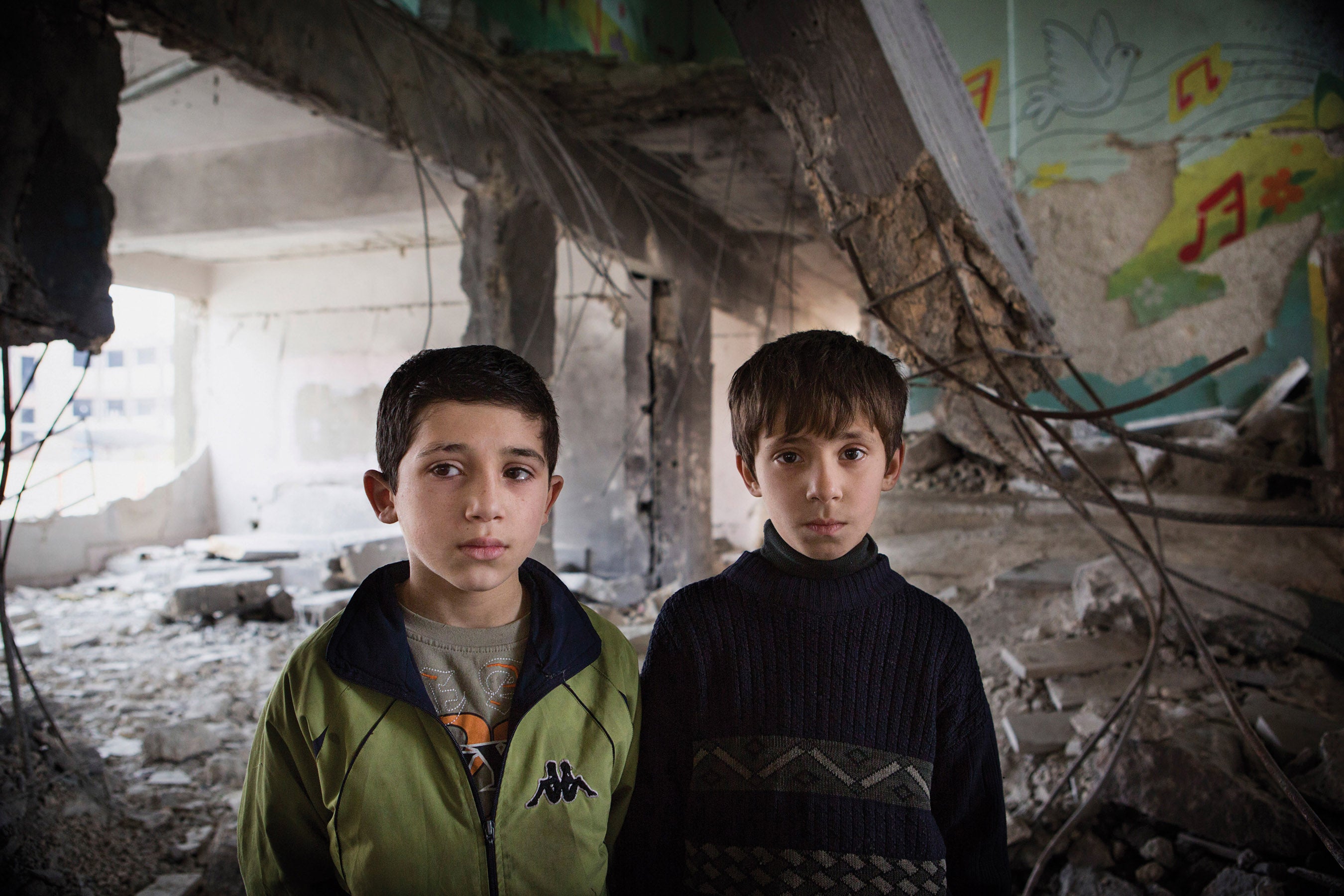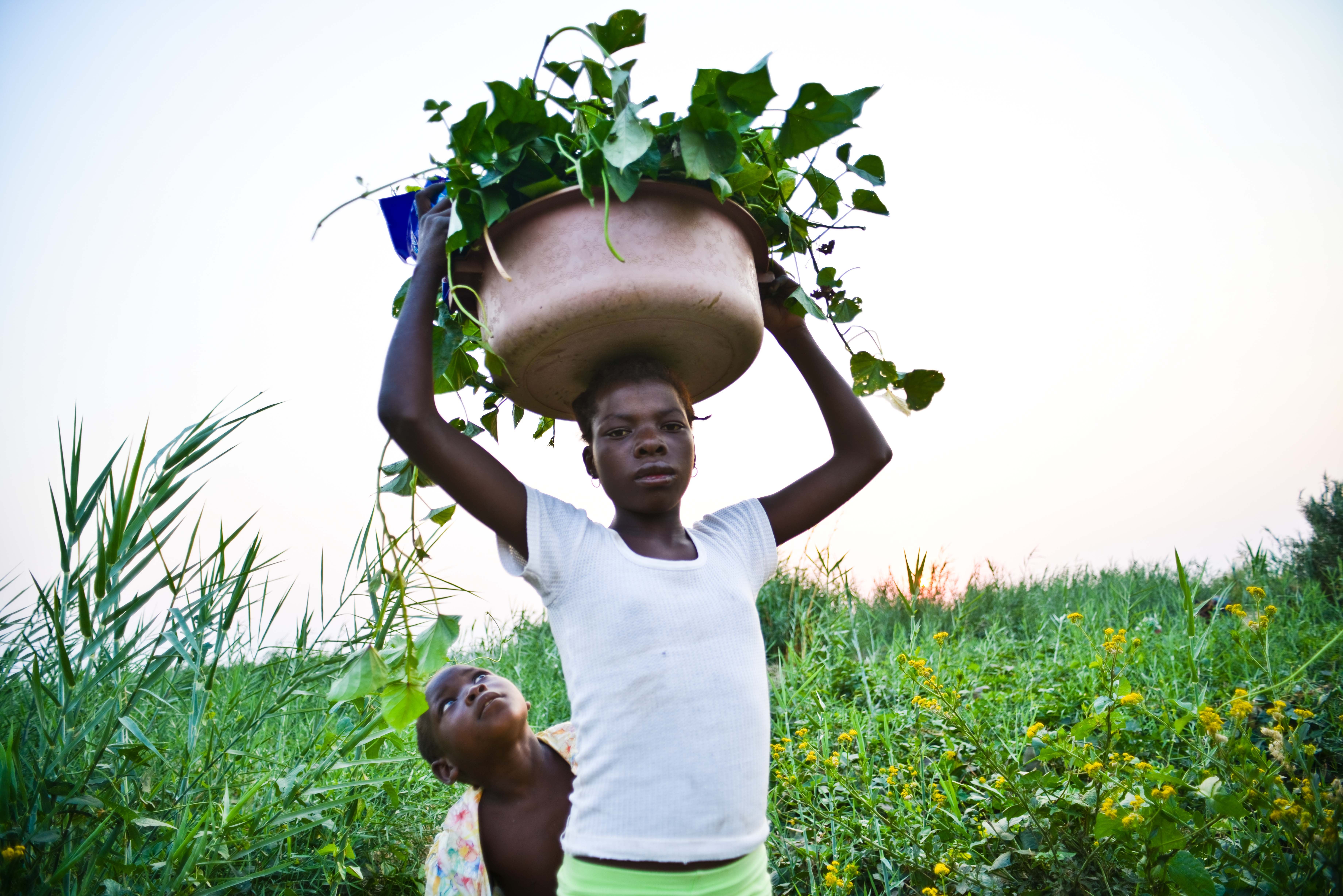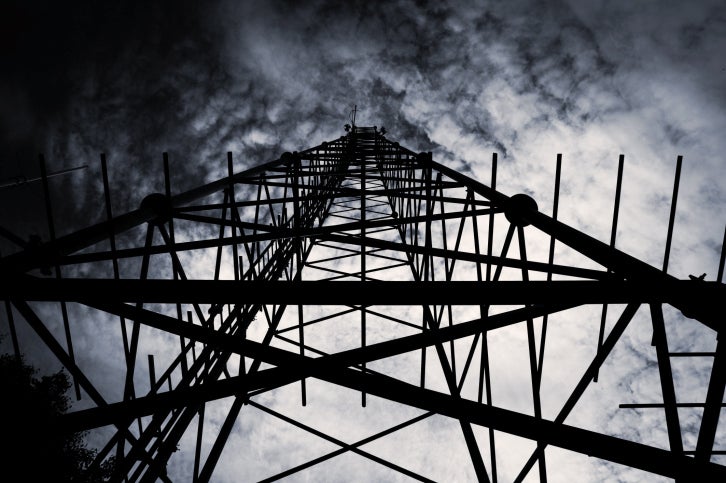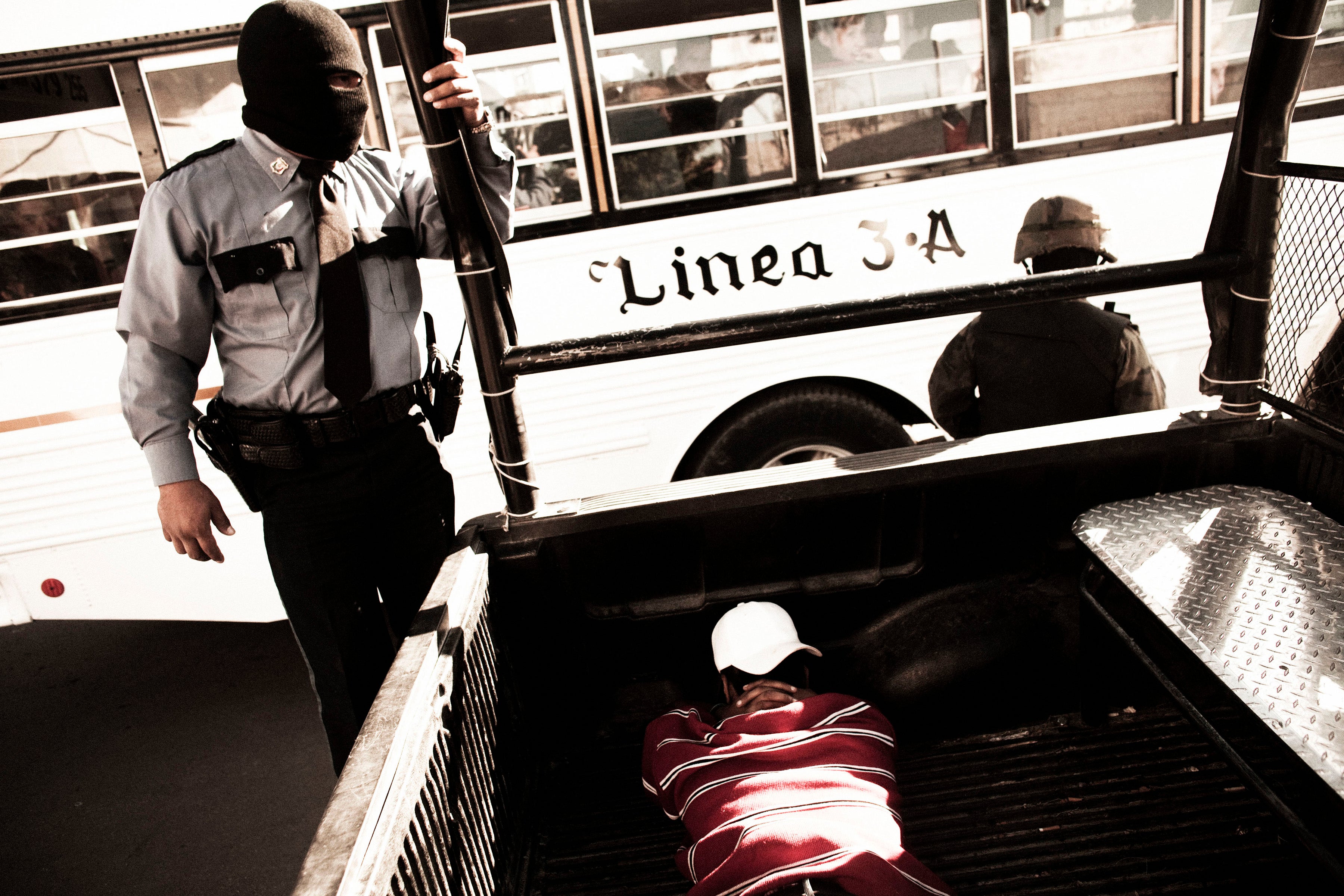India took positive steps in 2013 by strengthening laws protecting women and children, and, in several important cases, prosecuting state security force personnel for extrajudicial killings. The impact of these developments will depend in large part on effective follow-up by central government authorities. The year also saw increased restrictions on Internet freedom; continued marginalization of Dalits, tribal groups, religious minorities, sexual and gender minorities, and people with disabilities; instances of remained marginalized and often without redress; and persistent impunity for abuses linked to insurgencies, particularly in Maoist areas, Jammu and Kashmir, Manipur, and Assam.
Widespread protests over the gang-rape and death of a female student in New Delhi in December 2012 yet again drew international and domestic attention to the need for institutional reforms to ensure human rights protections in India. The government responded by enacting long-overdue reforms to India’s criminal laws to better address gender-based violence. But new reports of violence against women and girls exposed the wide gap between laws on the books and their implementation.
The fact that the government responded to public outrage confirms India’s claims of a vibrant civil society. An independent judiciary and free media also acted as checks on abusive practices. However, reluctance to hold public officials to account for abuses or dereliction of duty continued to foster a culture of corruption and impunity.
Investigations into Extrajudicial Killings
In December 2012, the National Human Rights Commission told the Supreme Court it had received 1,671 complaints of extrajudicial killings in the last five years. Following his 2012 visit to India, the UN special rapporteur on extrajudicial, summary or arbitrary executions, Christof Heyns, stressed the need to end impunity and bring perpetrators promptly to justice.
The courage and persistence of human rights activists and victims’ families resulted in a number of court interventions and investigations into deaths at the hands of security forces. In many cases the authorities had falsely claimed that the deaths occurred during armed exchanges or in self-defense.
In July 2013, the Supreme Court set up an independent panel led by a retired judge after groups from Manipur state filed a public interest petition seeking an investigation into 1,528 alleged extrajudicial executions between 1979 and 2012. The panel looked into six emblematic cases of alleged unlawful killings and found all violated the law. It also observed that security forces were wrongly being shielded by the Armed Forced Special Powers Act (AFSPA), which forbids the prosecution of soldiers without approval of the central government. Because officials rarely grant approvals, troops often enjoy effective immunity from prosecution.
In January 2012, the Supreme Court ordered an independent panel led by a retired judge to look into 22 alleged extrajudicial killings by police in Gujarat state between 2002 and 2006. On Supreme Court orders, court martial proceedings began in September 2012 against army officers accused by the Central Bureau of Investigation in the extrajudicial executions of five villagers from Pathribal in Jammu and Kashmir in 2000. The Armed Forces Special Powers Act shielded the officers from prosecution in a civilian court.
In July 2013, the Central Bureau of Investigation filed charges against policemen responsible for the 2004 killing of Ishrat Jahan, a young student, and three others in a faked armed encounter. In September, D.G. Vanzara, a senior official arrested along with 31 others from the Gujarat police for their alleged role in extrajudicial killings, wrote a letter claiming the killings took place while they were implementing Gujarat government policy.
Repeal of the AFSPA remained a core demand in northeast states and Jammu and Kashmir, where it is in operation. However, despite calls from judicial inquiries and national and international human rights bodies, the government failed to abide by its promise to repeal the abusive law because of strong opposition from the army.
Communal Violence
According to government estimates, 451 incidents of communal violence were recorded in the first eight months of 2013, compared to 410 incidents in all of 2012. Among these were clashes between Hindu and Muslim communities in August in Kishtwar town in Jammu and Kashmir, which killed three people and injured many others. In Bihar, an August altercation at a roadside eatery led to Hindu-Muslim clashes killing two people and injuring nearly a dozen. Over 50 people died in Hindu-Muslim violence in Muzaffarnagar in western Uttar Pradesh state in September. There is a risk of more violence in the run-up to the 2014 elections as political interest groups exploit tensions between the two communities.
Maoist Insurgency
Violence linked to an armed campaign in central and eastern India by the Communist Party of India (Maoist), known as Naxalites, led to the death of 384 people, including 147 civilians, in 2013. In May, Maoists attacked a convoy in Chhattisgarh, killing at least 20 people, including senior Congress Party politicians.
Tribal villagers and civil society activists, caught between the Maoists and the police, remained at risk of arbitrary arrest and torture by government forces, and of extortion and killings by Maoists.
Contrary to court orders, government security forces continued to occupy school buildings as bases for operations in Maoist-affected areas, endangering students and teachers, and depriving some of India’s most marginalized children of access to education. Maoists continue to target schools in bombing attacks.
In 2013, members of a Dalit cultural group, charged in 2011 under India’s draconian counterterrorism law, remained subject to prosecution for their alleged support of Maoist militants. Courts have repeatedly ruled that ideological sympathy alone does not justify criminal charges.
Freedom of Expression
Repeated abuse of section 66A of the Information Technology Act by police and other state authorities to stifle Internet freedom led the central government to issue an advisory in January 2013 making it mandatory for police to seek clearance from high-ranking officials before making arrests under the law. While this was an improvement, the provisions are still subject to abuse and used to criminalize free speech.
In April 2013, India started rolling out a Central Monitoring System to monitor all phone and Internet communications raised further concerns of abuse since current legal frameworks may not provide adequate oversight or safeguards for the right to privacy. According to recent transparency reports from Google and Facebook, India is second only to the United States in seeking private information about users from these companies.
On occasion, state governments gave in to the demands of interest groups to censor material such as books, talks, and film screenings.
Restrictions on Civil Society
India continued to use the Foreign Contribution Regulation Act (FCRA) to stifle dissent by restricting access to foreign funding for domestic nongovernmental organizations (NGOs) that have been critical of the government. The government targeted groups protesting against nuclear plants and big infrastructure projects. Among groups that lost permission to receive foreign funds was Indian Social Action Forum, a network of more than 700 NGOs across India.
Protection of Children’s Rights
Many children in India remained at risk of abuse and deprived of education. Despite efforts to forbid any employment of children under 14, millions remained in the work force, including the worst forms of labor. By some estimates nearly half of India’s children under the age of five are malnourished. Thousands of children remain missing, many of them trafficked within and outside the country.
The 2009 Right of Children to Free and Compulsory Education Act led to increased enrollment. However, children from vulnerable communities, particularly Dalits and tribal groups, faced various forms of discrimination, with many dropping out and eventually becoming child workers.
Despite enacting a strong law in 2012, the government failed to embark upon systemic reforms that are needed to ensure the protection of children from sexual abuse.
Women’s Rights
After the uproar over the gang-rape and death of a student in New Delhi in December 2012, the government instituted a three-member committee to propose legal reforms to better address gender-based violence. Based on the commission’s findings, parliament adopted amendments introducing new and expanded definitions of rape and sexual assault, criminalizing acid attacks, providing for a right to medical treatment, and instituting new procedures to protect the rights of women with disabilities who experience sexual assault.
Despite these important reforms, key gaps remain. For example, Indian law still does not provide adequate legal remedies for “honor killings,” or victim and witness protection. Parliament disregarded opposition by rights groups and in April 2013 expanded the scope of death penalty in rape cases.
In June, a local court ordered the reopening of the investigation into alleged mass rapes in the villages of Kunan and Poshpora in Jammu and Kashmir’s Kupwara district in 1991. Residents of the villages allege that soldiers raped women during a cordon and search operation.
Hundreds of rapes were reported across the country in 2013. Protests renewed in August after the gang rape of a journalist in Mumbai, accompanied by new calls for greater safety measures for women in public spaces.
In April, India adopted the Sexual Harassment of Women at Workplace (Prevention, Prohibition, and Redressal) Act 2013, which includes domestic workers employed in homes, and sets out complaint mechanisms and the obligations of employers to provide a safe working environment.
Palliative Care
After a series of positive steps in 2012 to address the suffering of hundreds of thousands of persons with incurable diseases from pain and other symptoms, progress on palliative care in India slowed considerably in 2013. The government has so far not allocated a budget to implement India’s progressive national palliative care strategy and parliament failed to consider critical amendments to the Narcotic Drugs and Psychotropic Substances Act that would dramatically improve the availability of strong pain medications. More than 7 million people in India require palliative care every year.
Rights of Persons with Disabilities
Even as India engages in a reform process to implement national disability and mental health laws, activists remain concerned that these laws are not in line with the Convention on the Rights of Persons with Disabilities, which India ratified in 2007.
Instances of violence against women and girls with mental or intellectual disabilities including involuntary confinement, physical and sexual abuse, inhumane or degrading treatment, and excessive electroshock therapy remained particularly high in state-run and private residential care facilities,which lack adequate oversight. Within the family and community, women and girls with disabilities also experience violence, including involuntary sterilization.
Death Penalty
India ended its eight-year unofficial moratorium on capital punishment in November 2012 with the hanging of Mohammad Ajmal Kasab, a Pakistani convicted of multiple murders in the high-profile November 2008 attacks on luxury hotels and the main railway station in Mumbai. In February 2013, the government executed Mohammad Afzal Guru, convicted for a December 2001 attack on the Indian parliament. Since taking office in July 2012, President Pranab Mukherjee has rejected 11 clemency pleas, confirming the death penalty for 17 people.
Indian law permits the death penalty only in the “rarest of rare” cases, but in November 2012 the Supreme Court ruled that this standard had not been applied uniformly over the years and death penalty standards needed “a fresh look.”
Key International Actors
Sexual violence against women in India drew international condemnation in 2013. After the notorious December 2012 New Delhi gang rape and murder, UN Secretary-General Ban Ki-moon called on India to take “further steps and reforms to deter such crimes and bring perpetrators to justice.” Attacks on foreign tourists led some countries such as the United States and the United Kingdom to issue travel advisories telling women travelers to exercise caution.
Despite the enormity of India’s human rights problems, countries that normally raise human rights issues in their foreign relations continued their low-profile approach to the world’s largest democracy.
India’s Foreign Policy
India did not live up to expectations in promoting respect for democracy and human rights in its foreign policy. Although the country aspires to a growing role in world affairs and a permanent seat on the UN Security Council, it did little to address some of most pressing problems confronting the world in 2013, such as the crises in Syria and Egypt.
At the UN Human Rights Council, India has rarely supported human rights resolutions on specific countries. While it usually opts for a policy of “non-interference in the internal affairs” of other countries, India notably supported HRC resolutions in 2012 and 2013 calling for accountability for alleged war crimes in Sri Lanka. It hasalso backed restoration of an elected government in Nepal.
In bilateral engagements, India called on the Burmese government to promote religious tolerance and harmony after attacks on Rohingya Muslims in Arakan State and on Muslim communities in central Burma in several incidents during 2013.
India engaged in promoting stability and human rights in Afghanistan, pledging nearly US$2 billion for the country’s rehabilitation and reconstruction efforts, supporting education of girls, providing some police training, and granting asylum to a number of activists fleeing Taliban threats.
